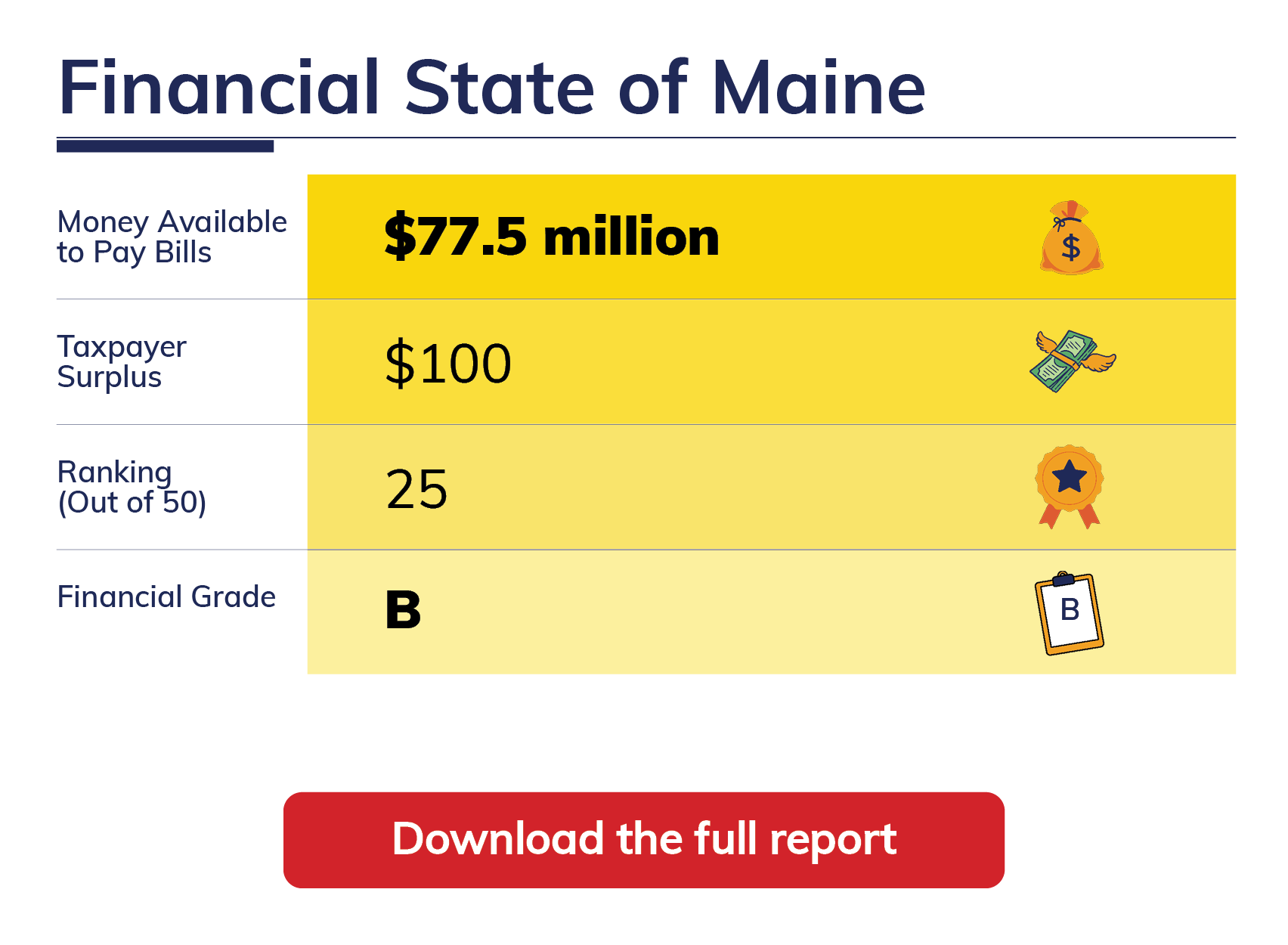Maine
| Maine owns more than it owes. |
| Maine has a $100 Taxpayer Surplus.™ |
| Maine is a Sunshine State with enough assets to cover its debt. |
| Elected officials have created a Taxpayer Surplus™, which is each taxpayer's share of money available after state bills have been paid. |
| TIA's Taxpayer Surplus™ measurement incorporates both assets and liabilities, not just pension debt. |
| Maine has $11.8 billion of assets available to pay the state's bills totaling $11.7 billion. |
| Maine has $77.5 million available after bills have been paid, which breaks down to $100 per taxpayer. |
| Maine's reported net position is understated by $855.4 million, largely because the state delays recognizing gains resulting from decreases in retirement liabilities. |
| The state's financial report was released 170 days after its fiscal year end, which is considered timely according to the 180 day standard. |
Prior Years' TIA Reports
Other Resources
Maine Annual Comprehensive Financial Reports
Publishing Entity: Office of the State Controller


